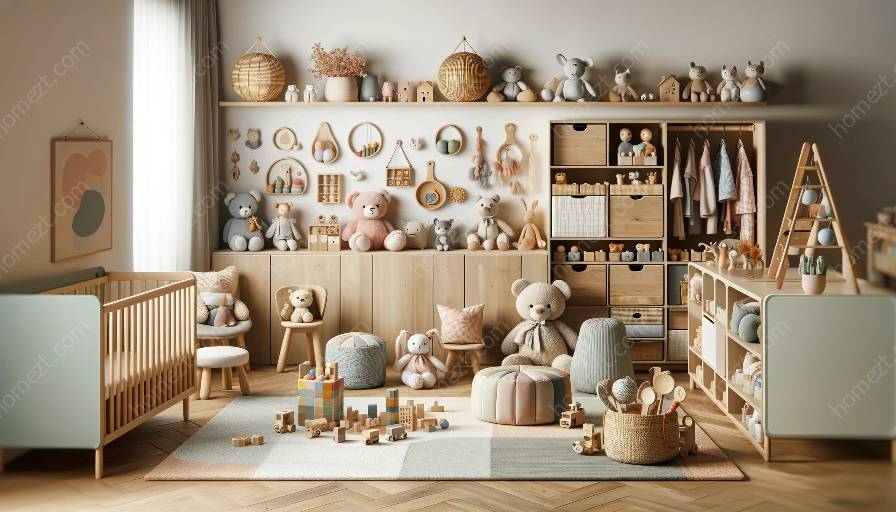Young children are curious and often explore their surroundings by putting things in their mouths. This natural behavior, however, presents a significant risk of choking. In a nursery and playroom, it's crucial to be aware of potential choking hazards and take measures to ensure the safety of children.
Common Choking Hazards in Nursery and Playroom
Choking hazards come in various forms, and being knowledgeable about them is essential for preventing accidents. Common choking hazards found in a nursery and playroom include:
- Small Toys and Parts: Pieces from toys, such as building blocks, dolls, or action figures, can easily become lodged in a child's airway.
- Food Items: Snacks like grapes, nuts, popcorn, and candies pose a significant choking risk, especially if not cut into small, manageable pieces.
- Small Household Objects: Items such as coins, buttons, batteries, and small decorative items can be attractive to young children but are extremely dangerous if swallowed.
- Balloons and Latex Gloves: When broken or torn, these can form a tight seal in a child's throat, leading to choking.
- Plastic Bags and Wrappers: Children can inadvertently put plastic bags or packaging material in their mouths, leading to suffocation and choking hazards.
Safety Measures to Prevent Choking Accidents
Creating a safe environment in a nursery and playroom involves implementing measures to mitigate choking hazards. Consider the following safety measures:
- Age-Appropriate Toys: Always select toys that are suitable for your child's age and development stage. Pay attention to manufacturer's recommendations for age appropriateness.
- Supervision: Keep a close eye on children, especially during playtime and mealtime. Supervision is crucial to preventing choking incidents.
- Food Preparation: Cut food items, such as fruits, vegetables, and meats into small, bite-sized pieces to minimize the choking risk. Encourage children to sit and eat properly, avoiding rushing or playing during mealtime.
- Childproofing: Ensure the playroom and nursery are childproofed, removing small objects, plastic bags, and other potential hazards from accessible areas.
- Education and Training: Teach older children about choking hazards and the importance of not sharing small objects with their younger siblings. Encourage responsible behavior around younger children.
- Secure Furniture: Anchor bookshelves, dressers, and other tall furniture to the wall to prevent tipping and trapping hazards.
- Electrical Safety: Cover electrical outlets with childproof covers and secure cords to prevent tripping and pulling hazards.
- Window Safety: Install window guards and ensure that blind cords are tied up and out of reach to prevent strangulation risks.
- Soft Flooring: Use soft, impact-absorbing flooring in play areas to cushion falls and reduce the risk of injury.
- Clean and Organize: Keep the playroom tidy and organized, ensuring that toys, books, and other items are stored in designated places, reducing the risk of tripping and falling.
Securing the Nursery and Playroom
In addition to addressing choking hazards, it's essential to secure the nursery and playroom to provide a safe and nurturing environment for children. Consider the following childproofing measures:
Conclusion
Choking hazards are a serious concern in a nursery and playroom, but with the right awareness and safety measures, it's possible to create a secure environment for children to learn and play. By addressing choking hazards, implementing childproofing measures, and promoting safe practices, parents and caregivers can ensure that the nursery and playroom are safe and enjoyable spaces for children to thrive.

